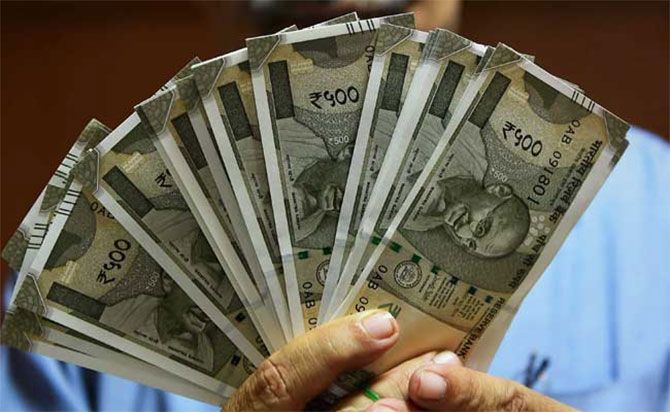 | « Back to article | Print this article |
When banks deposit their money with RBI, the central bank offers government securities of equal value. But now, it could be running out of enough securities to offer banks against the overnight deposits, reports Anup Roy.

RBI is one of those rare central banks in the world that sets aside bonds against the government’s cash balance.
Photograph: PTI Photo.
Already strained meeting the pressure of supplying fresh notes to banks, the Reserve Bank of India is now seeing its balance sheet getting impacted due to a deluge of excess liquidity that the commercial banks are parking with the central bank every day.
The RBI could be running out of enough securities to offer banks against the overnight deposits and experts say the central bank now urgently needs policy measures to protect the financial stability of its books.
Banks on Monday parked a mind-boggling Rs 4.32 lakh crore (Rs 4.32 trillion) of their excess liquidity with the central bank. Before the demonetisation move, banks used to deposit under Rs 5,000 crore (Rs 50 billion) of their excess liquidity in RBI’s reverse repo window.
On Monday, netting off for borrowings done by some banks through the liquidity window, the surplus fund parked with RBI was a record Rs 4.32 lakh crore, data released on Tuesday showed. This could only increase in the coming days as people are still queuing up to deposit their old notes at banks and the government still has restrictions on withdrawals.
When banks deposit their money with RBI, the central bank offers government securities of equal value. Therefore, RBI must have offered at least Rs 4 lakh crore (Rs 4 trillion) of bonds to banks on Monday.
RBI is also one of those rare central banks in the world that sets aside bonds against the government’s cash balance with the regulator. The central bank does not disclose the value of the cash balance kept on its books, but in a liquidity surplus scenario, the amount is always at least Rs 1 lakh crore (Rs 1 trillion), said an economist who did not wish to be named.
However, as of June 2016, RBI’s total bond holding was only Rs 7 lakh crore (Rs 7 trillion). This indicates that the central bank was left with a thin buffer of bond holdings on its books, which is inadequate.
Government bonds are the highest rated instrument in a country and is the safest asset class. A central bank always has to carry adequate amount of such bonds for its own financial stability.
As more deposits of old notes come into banks, they will tap this window, which will stretch RBI’s bond holding.
Experts say that a central bank can get around this issue. For starters, it can increase the cash reserve ratio (CRR) of banks. Banks need to maintain four per cent of its deposits as cash without earning any interest on it.
The central bank can also issue bonds under the market stabilisation scheme (MSS) to suck out the liquidity. However, every year the central bank fixes a ceiling on the amount of these bonds. The provision for this year is only Rs 30,000 crore (Rs 300 billion).
“Expect a very steep CRR hike by RBI. It has to protect its balance sheet at any cost,” said a former RBI official.